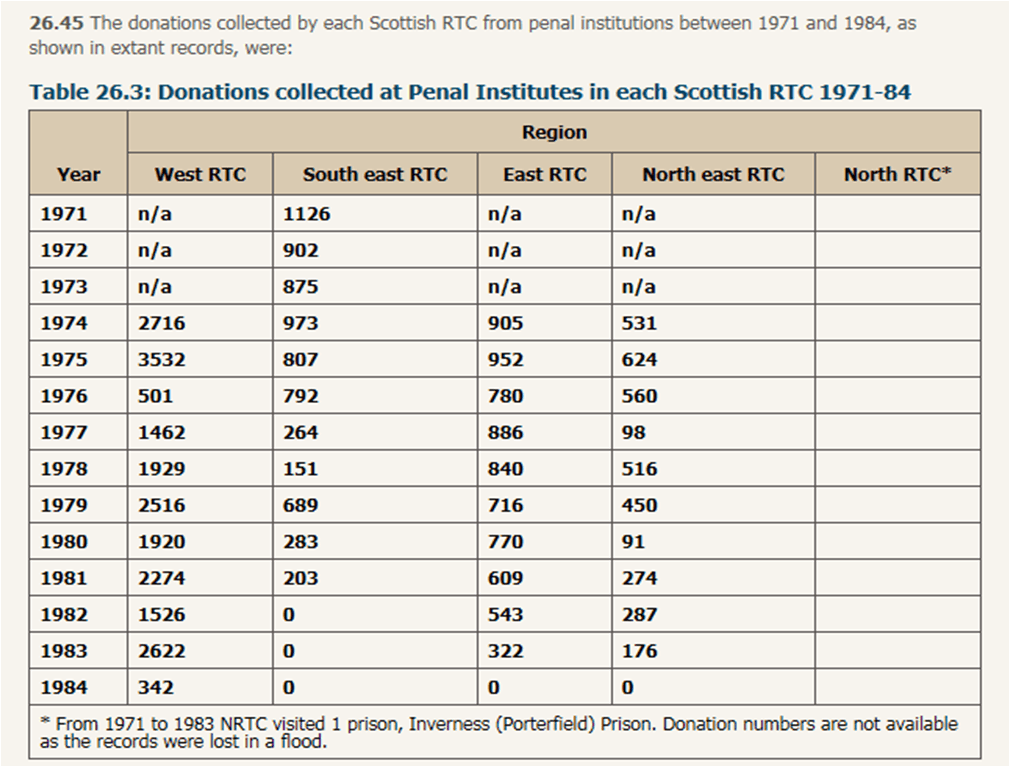Prison Blood
Without the admission our blood supply was partly drawn from heroin addicts, the main spark for healthcare testing is missing.
The collection of blood from prisons and borstal institutions in the UK continues right up until March 1984, despite repeated warnings that the practice is unsafe. WHY did the Authorities persist with taking blood from prisoners for so long? WHY in the desperate push to become self sufficient in blood in the 1970's and 1980's did we turn to this most infected of sources? WE are constantly told that donors were volunteers but the incentive of special treatment, extra foods, time with a lovely nurse, the opportunity to steal needles to do more injecting are payments that have high values to people suffering long term incarceration.
Here is a list of just some of the ignored warnings regarding UK prison blood:
• In 1980 we know that blood from Scottish prisoners was used in NHS transfusions despite serious concerns being raised.
• Then in 1983, the Medicines Inspector commented adversely on the practice of collecting blood from prisons and borstal institutions.
• By July 1983, the Medicines Division's Inspection Action Group had expressed serious concerns about the collection and use of blood from borstal institutions and prisons.
• In 1958, there was an early warning from a respected international source. Dr. J. Garrott Allen discovered what he referred to as the “prison effect” after conducting a survey in the Chicago area.
According to documentation released under FOI, it appears that discontinuing the collection of blood from prisons was going to cause considerable problems for the English and Welsh Health Authorities; as they would not be able to meet their annual blood quotas.
It seems, therefore, that collecting blood from prisons was not just to help the prisoners feel good, the Authorities needed the blood for the repeated attempts at achieving the much-promised self-sufficiency.
Prevalence of HIV, hepatitis B, and hepatitis C antibodies in prisoners in England and Wales: a national survey.
PHLS Communicable Disease Surveillance Centre, London. awield@phls.nhs.uk Weild AR, Gill ON, Bennett D, Livingstone SJ, Parry JV, Curran
Almost 8% (4778) of the total of 60,561 prisoners took part.
Among all those tested (3930) (293) 8% tested positive for HCV
Twenty-four per cent (777/3176) of adult prisoners reported ever having injected drugs.
Three quarters of those who injected in prison (167/224) shared needles or syringes.
Among adult injecting drug users, 31% (240/775) anti-HCV, and 20% (158/775) anti-HBc.
Harm minimisation measures for the 6% of prisoners who continue to inject while in prison should be strengthened.
Click below for the UK timeline note the entries in the Tainted Blood Info site from 1958-1985 warning on the risks of dependence on prison blood in the UK http://www.taintedblood.info/timeline.php

Above we see the excellent work done by Lord Penrose to audit just how much blood Scotland got from prison. Added up and estimating 6,000 would have been a logical amount for the North of Scotland Regional Transfusion Centre we have a total of 44,805 donations of Prison Blood in Scotland. If we remember Scotland is just 8% of the UK population a healthy guesstimate of Prison Blood throughout the UK would be 441,600 donations and this would be at least 44,000 Hepatitis C positive Transfusions. If as is highly likely the prisoners who commonly put syringes in their arms for recreation presented twice as often for donation the figure for HCV positive prison blood transfusions could be expected to be 88,000 from about 1970 to 1984.